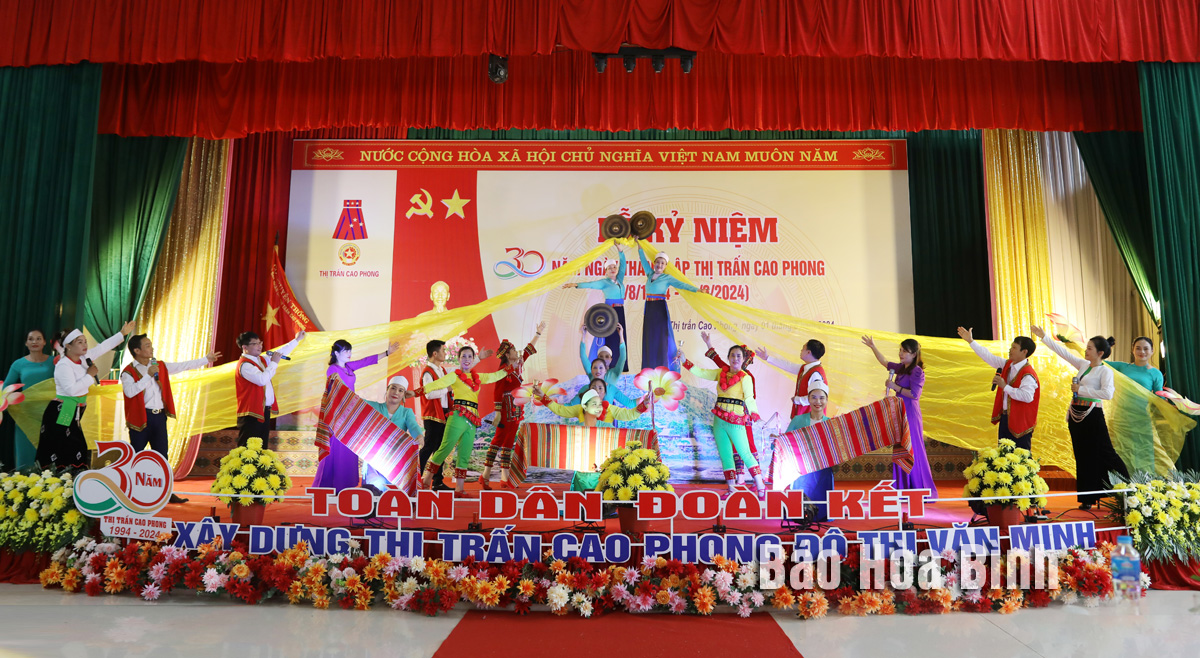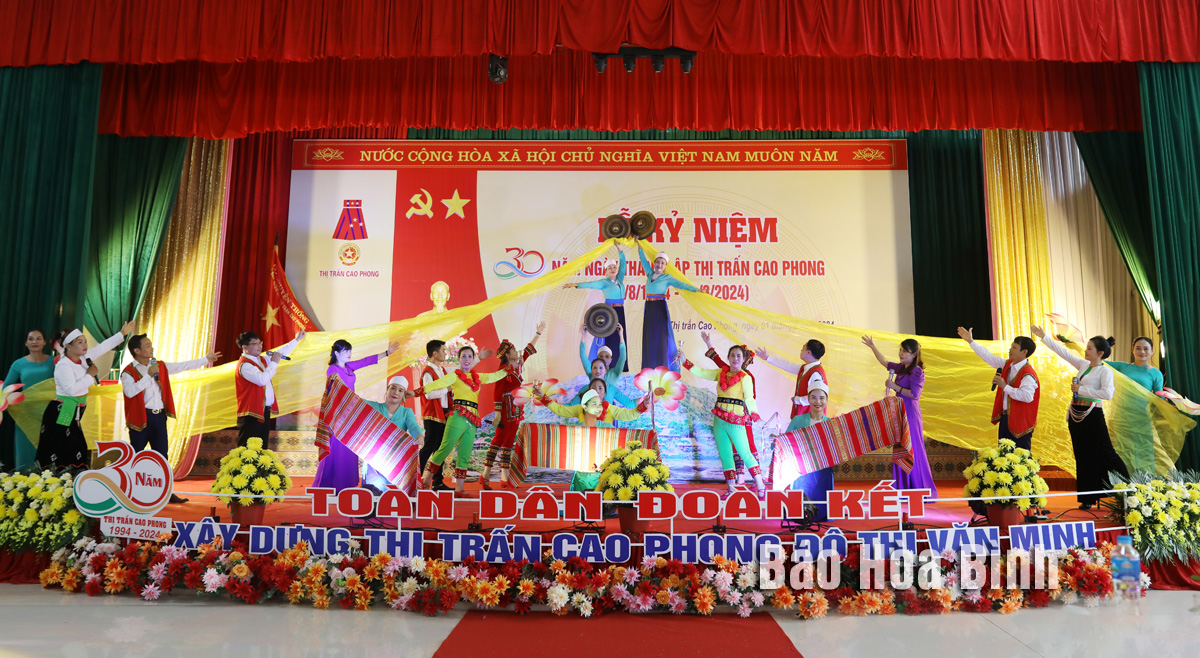
In recent years, Cao Phong district has focused on building and developing culture not only in daily life but also in politics and economics. This is one of six key tasks set in the resolutions of the 17th and 18th Party Congresses of the district, aiming to implement Resolution No. 33-NQ/TW of the 11th Party Central Committee on the development of Vietnamese culture and people to meet the nation’s sustainable development requirements.
Residents in Cao Phong town (Cao Phong
disstrict) proactively participate in cultural and artistic movements,
contributing to preserving and promoting the national culture.
Cultural development in tandem with sustainable
development
Vice Chairman of the People’s Committee of Cao
Phong district Nguyen Viet Phuong stated that recognising the key role of
culture in socio-economic development and in strengthening the political
system, Party committees and administrations at all levels in the district have
made the task of building a cultural environment a criterion for assessing the
performance of agencies and units.
Cultural development not only helps improve the
spiritual life of locals but also serves as an essential foundation for
completing sustainable development goals set by the district's Party
congresses.
The district focuses on political ideology,
ethics, and lifestyle education for cadres, party members, civil servants, and
public employees; promoting the role of those holding the top leading positions
in setting examples in implementing standards of conduct and professional
ethics.
Bui Dang Nhi, Secretary of the Party Committee
of Thach Yen commune, said the commune has promoted studyingand
following PresidentHo Chi Minh's
ideology,moralityandlifestyle, considering this a key task to
improve revolutionary ethics among cadres and party members. Over 90% of
households in the commune have achieved the title of "Cultural
Family", and 11 out of 12 hamlets of the commune have met cultural
standards.
Dinh Ba Cam, Director of the district’s Culture,
Sports and Tourism Centre, said the state management of culture in Cao Phong
district is deployed strictly and effectively. The district has created
favourable conditions for artists to maximise their creativity, and paid
attention to preserving and promoting the national cultural identity, he noted.
According to Cam, the district has 88 art
troupes in 88 hamlets and residential areas and 4 folk singing clubs. All
hamlets and residential areas have communal houses. The locality preserves over
1,600 gongs.
Motivation to promote socio-economic development
Cao Phong district pays heed to preserving the
cultural heritage, maintaining and promoting the national identity through
traditional festivals and historical-cultural relic sites.
In 2023, the district authority coordinated with
the provincial museum and related units to successfully organise the exhibition
"Hoa Binh's history from 1886 to 1975,”
attracting about 5.000 visitors in 7 days.
In addition, the district has implemented a plan
to preserve and promote Mo Muong cultural heritage through training activities,
seminars and cultural festivals. These activities attracted thousands of
visitors, contributing to promoting tourism and economic development of the
locality, creating momentum for socio-economic development.
Phuong said festivals and cultural activities
held annually have attracted a large number of tourists, generating significant
income for local residents. Traditional festivals not only help promote the
national culture, but also contribute to developing the tourism economy,
strengthening community solidarity and building a civilised society with
sustainable development.
With an increasingly vibrant and widespread emulation movement aimed at building cultured residential areas and cultured families, Yen Thuy District has been making steady progress toward improving both the material and spiritual well-being of its people, while fostering a civilized, prosperous, beautiful, and progressive community.
Once lacking recreational spaces and community facilities, Residential Group 2 in Quynh Lam Ward (Hoa Binh City) has recently received attention for the construction of a new, spacious, and fully equipped cultural house. The project followed the model of state support combined with public contributions in both labor and funding.
The "All people unite to build cultural life" movement, which has been effectively integrated with Kim Boi district’s socio-economic development goals, is fostering a lively spirit of emulation across local residential areas, hamlets, villages, public agencies, and enterprises. In addition, through the initiative, traditional cultural values are being preserved and promoted, while community solidarity and mutual support in poverty reduction and economic development are being strengthened.
A working delegation of the Hoa Binh provincial People’s Committee led by its Permanent Vice Chairman Nguyen Van Toan on June 11 inspected the progress of a project to build the Mo Muong Cultural Heritage Conservation Space linked to tourism services in Hop Phong commune, Cao Phong district.
Born and growing in the heroic land of Muong Dong, Dinh Thi Kieu Dung, a resident in Bo town of Kim Boi district, in her childhood was nurtured by the sweet lullabies of her grandmother and mother. These melodies deeply imprinted on her soul, becoming an inseparable part of her love for her ethnic group's culture. For over 20 years, this love for her hometown has driven Dung to research, collect, and pass down the cultural values of the Muong people to future generations.
In the final days of May, the Ethnic Art Troupe of Hoa Binh Province organized performances to serve the people in remote, mountainous, and particularly disadvantaged areas within the province. These were not just ordinary artistic shows, but they were the meaningful journeys aimed at spreading cultural values, enhancing the spiritual life of the people and contributing to the preservation of ethnic minority cultural identities.



